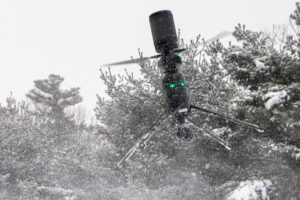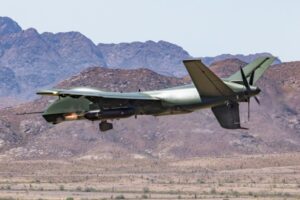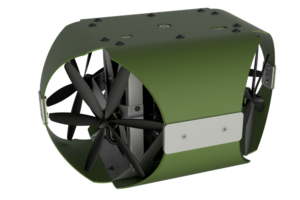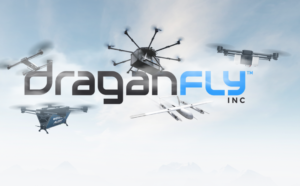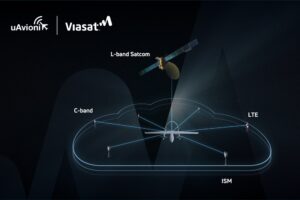DJI makes two excellent drones for different purposes: the adrenaline-pumping Avata 2, an FPV (First-Person View) racing flyer, and the versatile Air 3, a high-quality (yet easy to fly) camera drone for stunning visuals. So between the DJI Avata 2 vs. Air 3, which one should you get? The answer isn’t as simple as you might think, so let’s break down which drone is right for you.
How to decide between the Avata 2 vs. Air 3:
DJI Avata 2 vs. Air 3: a comparison of price and specs
The DJI Avata 2 drone is all about FPV (First Person View) flying, allowing pilots to see the world through the drone’s eyes by wearing the DJI Goggles 3. It’s great for flying indoors, particularly in tight spaces, or for people who want to take wildly acrobatic action videos. It launched in April 2024 as the second edition of the Avata, which was DJI’s first forray into Cinewhoop-style drones.
The DJI Air 3 is a more traditional camera drone — and it’s an ultra-high quality one at that. With two cameras (a wide-angle camera and a 3x medium tele camera), it’s one of the best camera drones out there. But it’s also quite simply a powerful workhorse, offering boffo specs like 46 minutes of flight time. That’s double the flight time of the Avata 2.
And with omnidirectional binocular vision system — supplemented with an infrared sensor at the bottom of the aircraft — it’s practically crash proof. That makes it especially great for beginners who still want a super-high-quality drone.
Both have a similar price point. Though the Avata 2 starts at $999, ultimately you’ll likely end up paying $200 more to upgrade to the DJI FPV Remote Controller 3 (so budget $1,199). That’s the only way you can fly the Avata 2 in manual mode, which is really where you can unlock those incredible flight capabilities. The DJI Air 3 starts at $1,099, putting you in the same ballpark in terms of cost.
Beyond just price, though, here’s a comparison of key specs differentiating the DJI Avata 2 vs. Air 3:
| DJI Avata 2 | DJI Air 3 | |
| Price | $999 | $1,099 |
| Takeoff Weight | 377 grams | 720 grams |
| Dimensions Folded without propellers (L×W×H) | 185×212×64 mm | 207×100.5×91.1 mm |
| Max Flight Time | 23 minutes | 46 minutes |
| Max Wind Speed Resistance | 10.7 m/s | 12 m/s |
| Global Navigation Satellite System | GPS + Galileo + BeiDou | GPS + Galileo + BeiDou |
| Onboard camera(s) | One camera | Two cameras (wide angle and medium tele camera) |
| Image Sensor | 1/1.3-inch CMOS, Effective Pixels: 12 MP | 1/1.3-inch CMOS, Effective Pixels: 48 MP |
| ISO Range | 100-25600 | 100-6400 (normal) 100-12800 (night) |
| Max Image Size | 4000×2256 (16∶9) 4000×3000 (4∶3) |
8064×6048 (48 MP) |
| Max Video Bitrate | 130 Mbps | 150 Mbps |
| Sensing Type | Downward and backward visual positioning | Omnidirectional binocular vision system, supplemented with an infrared sensor at the bottom of the aircraft |
| Video Transmission System | DJI O4 | DJI O4 |
So what do all these specs actually mean? Here’s a deeper dive into the DJI Avata 2 vs. DJI Air 3 drones:
DJI Avata 2 vs. Air 3 camera
Based on camera alone, the DJI Air 3 is the clear winner versus the Avata 2.
Following in the footsteps of higher-end drones like the DJI Mavic 3, the DJI Air 3 boasts not just one but two cameras. Here are those two camera’s specs.
- A 1/1.3-inch CMOS wide-angle camera
- 24mm format equivalent
- F1.7 aperture
- A 1/1.3-inch CMOS 3x medium tele camera (can achieve 3x optical zoom)
- 70mm format equivalent
- F2.8 aperture
Both DJI Air 3 cameras offer the same specs in terms of:
- 2.4μm pixel size
- 48MP photos
- 1/1.3-inch CMOS sensors
- Post-cropping support for easy secondary composition.
- Support for dual native ISO for direct output of 4K/60fps HDR video at high frame rates and up to 4K/100fps max
- Support for 10-bit D-Log M and 10-bit HLG color modes
Now the DJI Avata 2’s camera is certainly not bad, and it actually makes for an incredible pick if you’re looking to use it for making wild FPV videos or even doing indoor real estate photography. But it’s just not quite there if your primary goal is ultra high quality images:
| Feature | DJI Avata 2 | DJI Air 3 |
|---|---|---|
| Sensor Size | 1/1.3-inch CMOS | 1/1.3-inch CMOS |
| Effective Pixels (approx.) | 12MP | 48MP |
| Max image size | 4000×2256 (16∶9) 4000×3000 (4∶3) |
8064×6048 |
| Max video bitrate | 130 mbps | 150 mbps |
| Video Stabilization | Electronic Image Stabilization (EIS) | 3-axis Mechanical Gimbal |
| Field of View (FOV) | 155° | 82° (wide-angle camera) 35° (medium tele camera) |
Clearly, the DJI Air 3 just offers much higher image quality. More pixels means larger image sizes, which is ideally if you want to display your aerial imagery on something bigger than a smartphone screen. It operates at a higher video bitrate, which means better video quality. (Though the drawback is larger file sizes, too.)
There are some key differences, which are hard to definitively state are better or worse, though. That includes the gimbal versus no gimbal, as well as the field of view.
Gimbal vs EIS: The DJI Air 3 has a 3-axis mechanical gimbal, which is a staple in drones in offering that silky smooth aesthetic of the camera just gliding through the air. In contrast, the Avata 2 ditches the gimbal in favor of digital stabilization algorithms to smooth out footage. DJI touts two algorithms: DJI RockSteady (to eliminate overall picture shake) and DJI HorizonSteady (to ensure your footage remains locked on the horizon — even if the drone turns sharply or sways dramatically).
While the DJI Air 3’s gimbal isn’t necessarily delicate, the protruding external part is just one more potential object that could be damaged. DJI’s designers had that in mind when building the Avata 2, given it’s pretty much expected that the Avata 2 would crash.
The footage on the Avata 2 is still incredibly smooth, though. Just check out this glide over my backyard, filmed on the Avata 2:
It’s difficult to ignore the ultra-wide, 155° field of view on the Avata 2. It offers a rather immersive type of aesthetic, which you may or may not want.
With the Air 3, you have two cameras to choose from. The zoom camera obviously offers a relatively narrow field of view at 35°. And even the 82° FOV on the wide-angle camera is nothing like what you get on the Avata 2. Traditional filmmakers will likely err with what the Air 3 offers, but someone seeking a different aesthetic might be curious to try the Avata 2.
Avata 2 vs. Air 3: Comparing drone size (winner: Avata 2)
The DJI Air 3 is the bigger of the two drones, so someone trying to fly through doorframes will prefer the narrower design of the Avata 2. The Air 3’s dimensions (length and width) are 258.8 x 326 mm, while the Avata 2’s dimensions are just 185 x 212 mm.
The Air 3’s exposed propellers make it less forgiving in crashes compared to the Avata 2, which has a built-in propeller guard.
As far as traveling with the drones, they start to become more comparable. Because while the Air 3 is larger in flight, its arms fold in, allowing it to shrink down to 207×100.5×91.1 mm when folded up. The Avata 2 is not a foldable drone.
As far as the weight of these two drones, the Air 3 is bigger. The Avata 2 weighs 377 grams, and the Air 3 weighs 720 grams. While I wouldn’t call the Air 3 ‘heavy,’ it’s still a lot heavier than the Avata 2.
Weight matters on both of these drones, because they exceed the critical 250 gram threshold. Many countries categorize drones based on their weight. And in many countries, drones that weigh under 249 grams are exempt from certain aircraft regulation, including the need for registration. Specific to the U.S., drones that weigh 250 grams or more must be registered and Remote ID compliant if flying outdoors in most places.
Yes, that means both the Air 3 and Avata 2 must be registered when flown outdoors in most places in the U.S.
DJI Avata 2 vs. Air 3: differences in the aircraft itself
The two aircraft look quite different. The DJI Air 3 follows the form first introduced in the DJI Mavic Pro back in 2016. That means foldable arms and a gimbal.
The DJI Avata 2 is not foldable, but instead features propellers protected by built-in propeller guards. Those are meant to protect the drone (and your walls) in the event of a crash. And yes, given this drone’s nature as a racing drone, it’s kind of ready for a crash.
If you’re flying outdoors, the Air 3 is better for one key reason: it holds up better in the wind. The Air 3 offers 12 m/s wind speed resistance. Meanwhile, the Avata 2 offers a good but not great level of 10.7 m/s wind speed resistance.
Obstacle avoidance vision systems (winner: DJI Air 3)
The DJI Air 3 version has an omnidirectional binocular vision system supplemented with an infrared sensor at the bottom of the aircraft. That effectively makes your DJI Air 3 drone crash-proof. If you don’t want to risk crashing, order the DJI Air 3
The Avata 2 has just downward and backward visual positioning — but that’s kind of the point. This is meant to be a racing or acro drone, meaning it flies flips and does acrobatic aerial tricks. If you’re afraid of crashing, this isn’t the drone for you.
- Order the DJI Air 3 drone from Amazon now, starting at $1,099.
- Order the DJI Air 3 drone from B&H Photo now, starting at $1,099.
Transmission (winner: tie)
This is a tie. Both drones use O4, which is DJI’s newest transmission system. This ultra-low latency, high-definition digital video transmission system, displays flight live feeds in real-time, creating an immersive flying experience.
Since both drones are compatible with the DJI Goggles 3, that feature really becomes interesting. Alas, when used with DJI Goggles 3, the latency is as low as 24 ms at 1080p/100fps live feeds.
Battery life (winner: DJI Air 3)

The Avata 2 gets just 23 minutes. The DJI Air 3 offers double that, at an incredible 46 minutes of flight time. Sure, you can always buy more batteries. But having longer flight times reduces risks of problem should your drone be flying far away in tough wind conditions and needs to return to home. It also just means less time needing to spend cutting flights short for recharging or replacing batteries.

How to decide between the DJI Air 3 vs. Avata 2
Given how different these two drones are, the decision should be relatively easy, despite their very similar price point.
The Avata 2 is an adrenaline-pumping, racing and acro drone. The Air 3 is more versatile as a camera drone for stunning visuals that can still function as an FPV drone when you pair it with the new DJI Goggles 3 and RC Motion 3.
Who is the DJI Air 3 best for?
Get the DJI Air 3 if your primary goal is high-quality imagery. The not one but two cameras are superior to what the Avata 2 offers.
And don’t skip it if you value ease of use and stability or prefer a longer flight time. It’s definitely the more beginner-friendly option versus the Avata 2.
Just note that if you ARE curious about flying FPV style with the DJI Air 3, it’s going to be a lot more expensive. To get the full FPV experience, you’ll need to purchase compatible DJI goggles separately, adding to the cost. If it’s the DJI Goggles 3 you want, that’ll be an additional $500. Even the cheaper DJI Integra aren’t exactly ‘cheap,’ still coming in at $349.
- Order the DJI Air 3 drone from Amazon now, starting at $1,099.
- Order the DJI Air 3 drone from B&H Photo now, starting at $1,099.
Who is the DJI Avata 2 best for?
Whereas the DJI Air 3 is like a slick luxury car, the Avata 2 is for the person who wants a race car.
Only get the Avata 2 if you thrive in the thrill of FPV flying. It’s the drone for adrenaline junkies who still want the convenience and quality that DJI is know for. If your style of a great video is tight maneuverability, action shots, flying fast or doing tricks, this is your drone.
Ultimately the Avata 2 is going to be best drone if you really want to showcase your flying skills. But you’ll also need to upgrade to the DJI FPV Remote Controller 3 to make that happen (which costs an additional $200).
Sure, the Avata 2 promises to be new-pilot friendly with its RC Motion 3 providing a simplified control scheme. But ultimately, the Avata 2’s best features don’t come through unless you’re a really skilled pilot. Given that, beginners (or people whose goal is to not be a pro pilot) are just better off with the Air 3.
- Buy the Avata 2 drone now from Adorama.
- Buy the Avata 2 drone now from Amazon.
- Buy the Avata 2 drone now from B&H Photo.
- Buy the Avata 2 drone now from GetFPV.
For more information about these two drones, check out my detailed DJI Air 3 review as well as my comprehensive DJI Avata 2 review. Oh and by the way, are you also considering the DJI Air 3 over a cheaper drone, like the DJI Air 2S? Check out my guide to the DJI Air 3 vs DJI Air 2S.
And tell me, between the DJI Air 3 versus Avata 2 drone, which one would you rather have? Share your comment below!
The post DJI Avata 2 vs. Air 3: which drone is better? appeared first on The Drone Girl.





